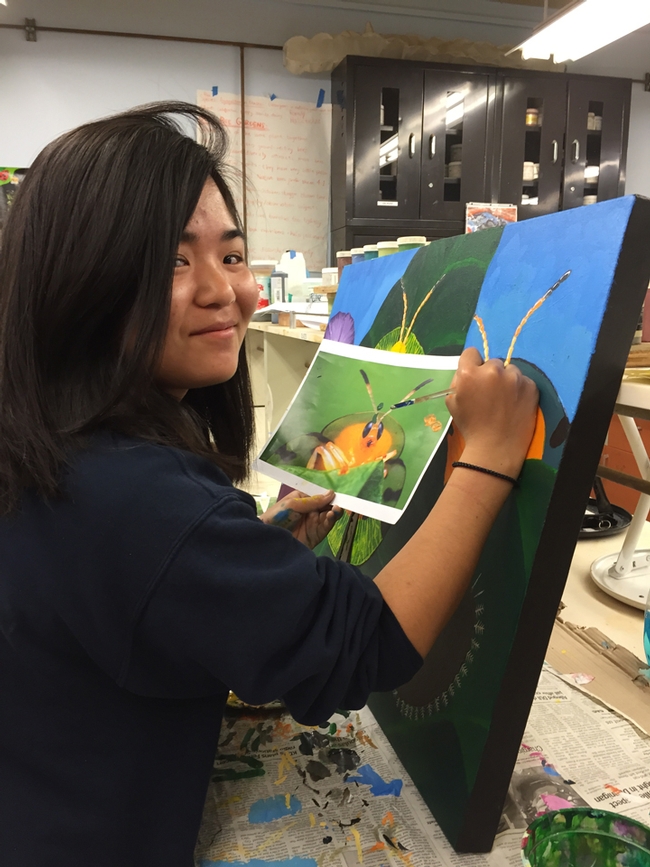- Author: Kathy Keatley Garvey
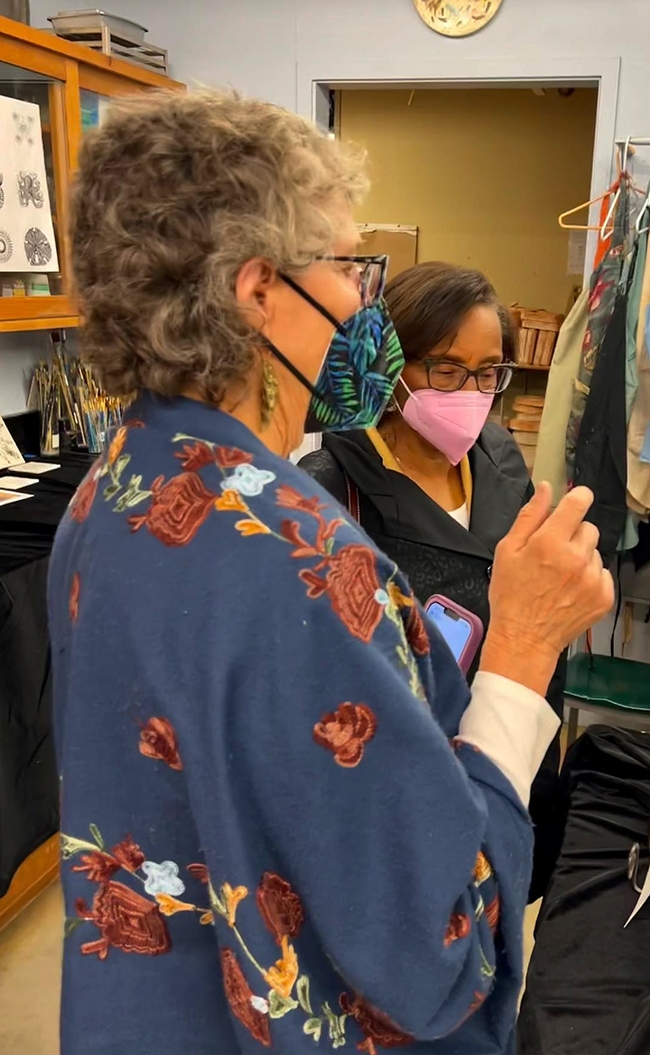
This was the Entomology 001 art show, titled "Insects in the Anthropocene," hosted by assistant professor Emily Meineke and UC Davis distinguished professor Diane Ullman.
Among those attending: Helene Dillard, dean of the UC Davis College of Agricultural and Environmental Sciences (CA&ES).
Meineke explained the gist of it: "The students were each assigned an insect species in decline or moving about the planet and becoming invasive in new habitats. The insects students were assigned are among those most impacted by humans, and students were given an opportunity to re-envision how people might interact more gently and intentionally with insects, our small, yet consequential co-inhabitants."
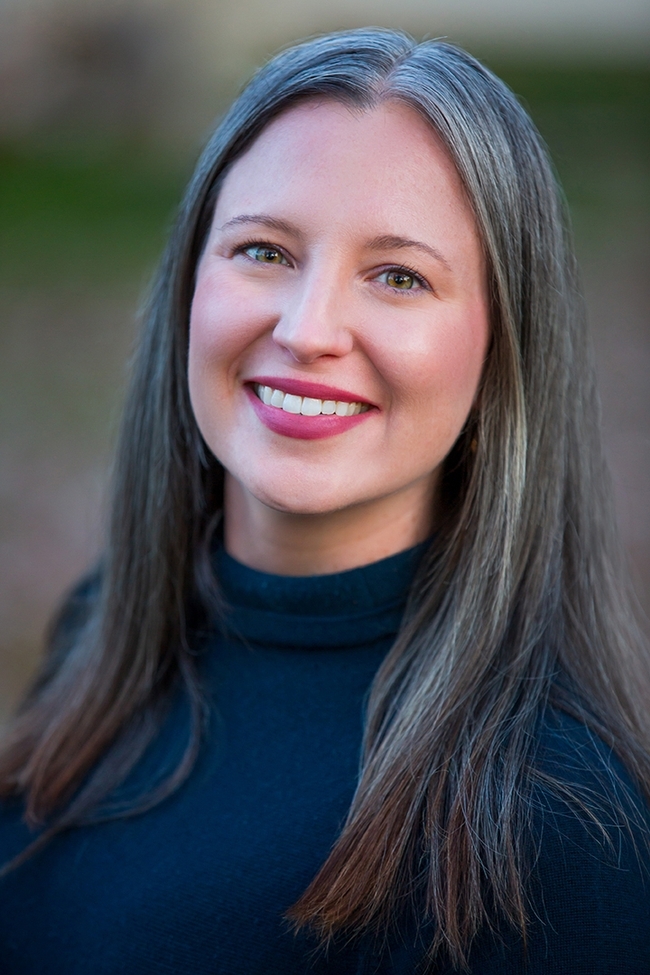
Ullman, a noted artist and entomologist, wasn't an "official co-teacher," Meineke said, but she "helped immensely."
A celebrated teacher, artist and researcher, Ullman is the founder and co-director of the UC Davis Art/Science Fusion Program, established in 2016. Highly honored by her peers, Ullman received the Entomological Society of America (ESA) National Excellence in Teaching Award in 2014 and the UC Davis Academic Senate's Distinguished Teaching Award for undergraduate teaching in 2022. She is a fellow of both the American Association for the Advancement of Science (2014) and the ESA (2011); former chair of the Department of Entomology (2004-05); and former associate dean for undergraduate academic programs for CA&ES (2005-2014).
Many of those attending brought a t-shirt to received a free screen print of one of the designs.
"We were kept busy," Ullman related.
Meineke, recently named one of the 12 UC Davis recipients of the prestigious Hellman Fellowships, an annual program supporting the research of early-career faculty, was among the scholars and artists who helped spearhead the newly created Harvard Museum of Natural History's “In Search of Thoreau's Flowers: An Exploration of Change and Loss." It's hailed as an examination of the natural world and climate change at the intersections of science, art and history. Meineke helped launch the project in 2017 when she was a postdoctoral fellow at the Harvard University Herbaria. The 648 plant specimens that Henry David Thoreau donated to the museum form the foundation of the exhibit. It opened to the public May 14.
UC Davis entomologist Jenella Loye of Carroll-Loye Biological Research shared some of her images with us. She and husband, Scott Carroll, are research associates with the Department of Entomology and Nematology.
And here...drum roll...are images from "Insects in the Anthropocene."
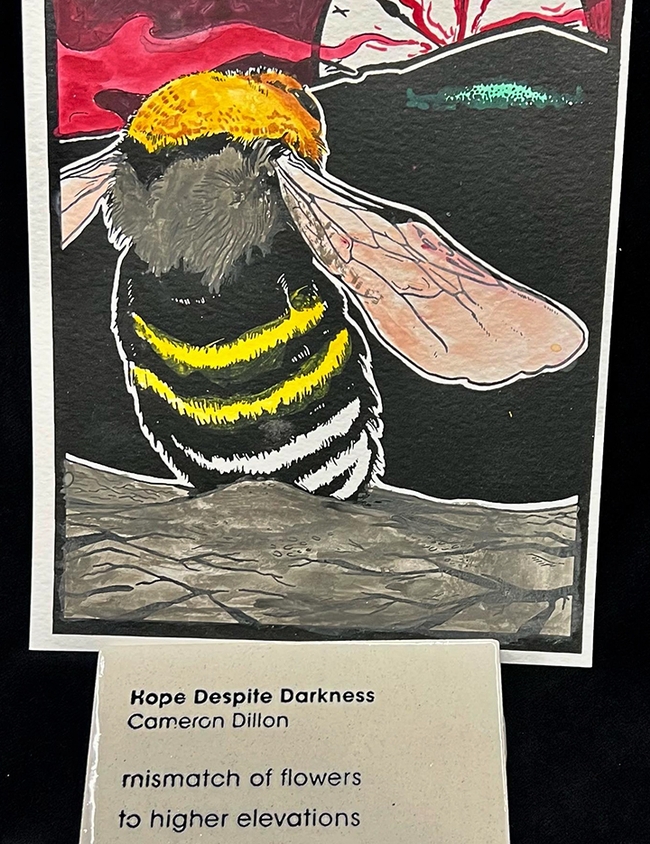
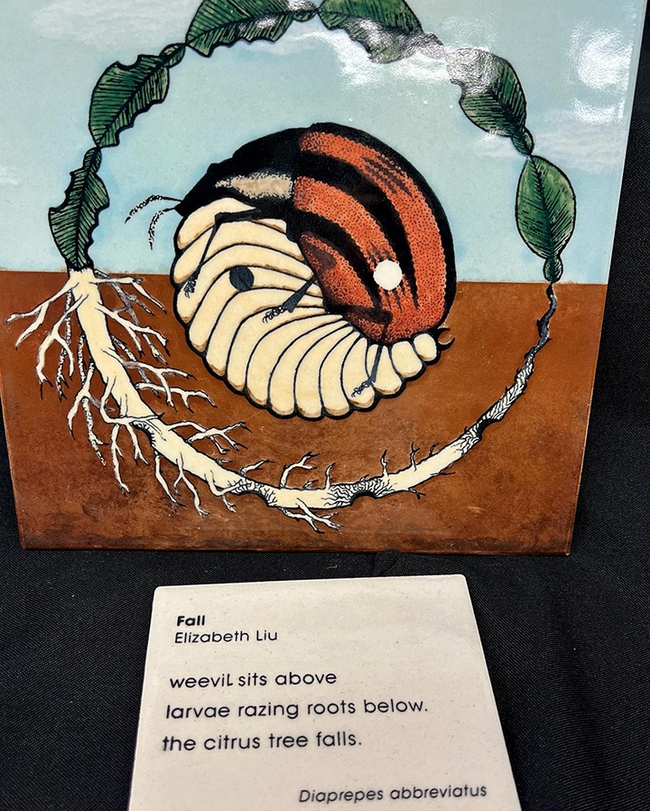
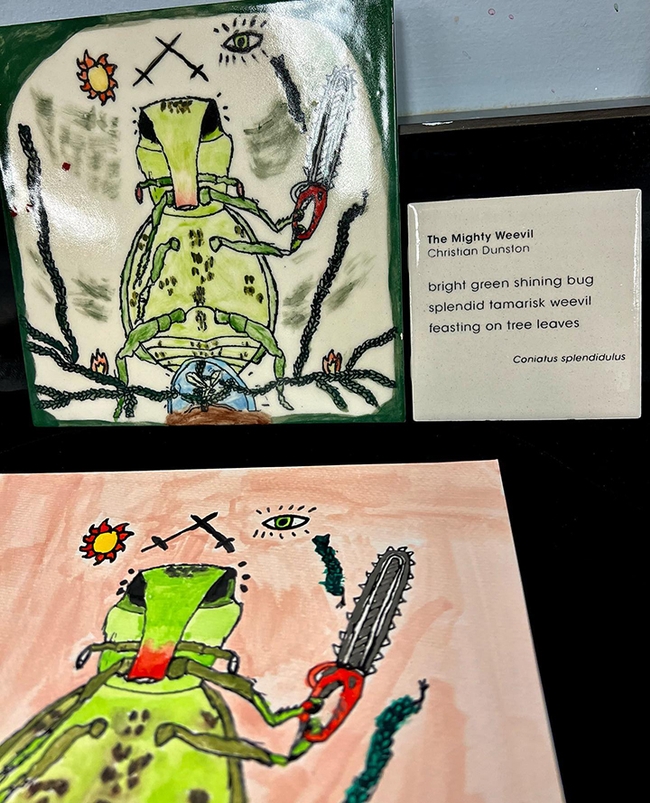
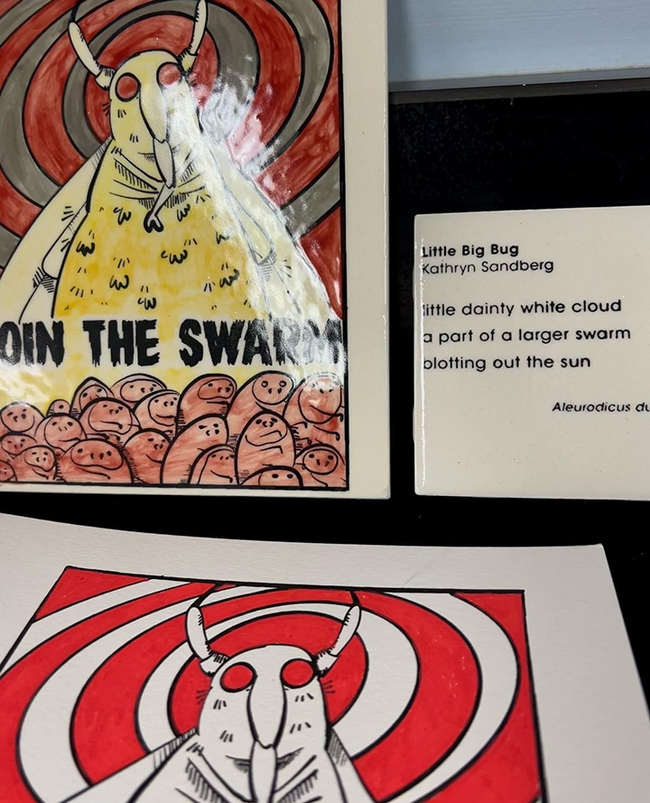
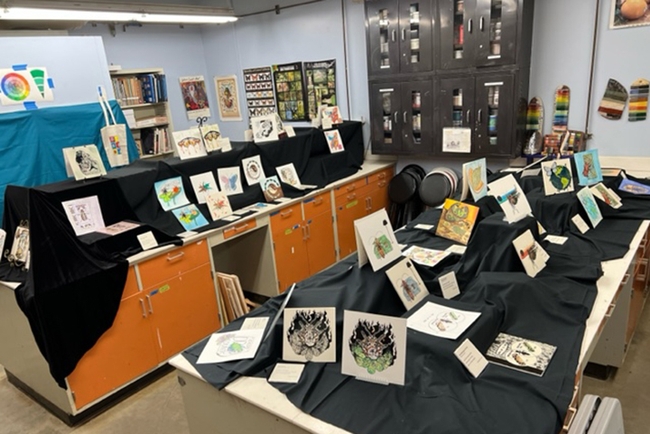
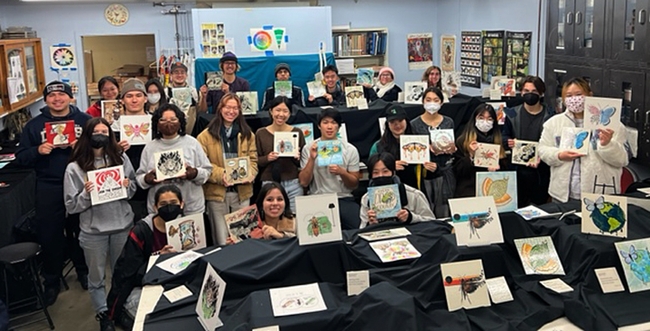
- Author: Kathy Keatley Garvey
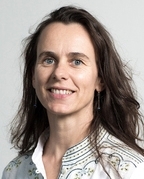
What are witchetty grubs?
Briefly, they're large, white, wood-eating larvae of the cossid moth Endoxyla leucomochla, which feeds on the roots of the witchetty bush (after which the grubs are named). "The term may also apply to larvae of other cossid moths, ghost moths (Hepialidae), and longhorn beetles (Cerambycidae)," Wikipedia tells us. "The raw witchetty grub tastes similar to almonds, and when cooked, the skin becomes crisp like roast chicken, while the inside becomes light yellow, like a fried egg."
Like a Pacifier
Turpin's abstract: "Edible insect larvae constitute a large part of the traditional Australian Aboriginal diet. Perhaps the most widely known example is the ‘Witchetty grub' (Endoxyla spp.). These played a role similar to that of a pacifier for infants being weaned. The term ‘witchetty' is the common name of the tree whose roots this popular grub dwells in (Acacia kempeana). The naming of specific larvae based on their host tree is a common naming strategy in the Aboriginal language Kaytetye, for which there are some 25 ethnospecies. This paper draws on Kaytetye people's knowledge, uses and naming of ethnospecies within the 'edible insect larvae' food class, which is one of five Kaytetye food classes."
Cooperative Extension specialist Ian Grettenberg, an agricultural entomologist and assistant professor in the UC Davis Department of Entomology and Nematology, coordinates the department's weekly (virtual) seminars, held every Wednesday, except during holidays.
Turpin's hosts are evolutionary ecologists and biologists Scott Carroll and Jenella Loye of the Institute for Contemporary Evolution who engage in Carroll-Loye Biological Research. The scientists are affiliated with the Sharon Lawler lab, UC Davis Department of Entomology and Nematology.
"I've visited her pioneering entomophagy studies among the remnant, so-called 'remote' central Australian peoples," said Carroll. "Academic entomologists know almost nothing about the biology of these insects. I learned that Giant Moth witchetty grubs are the most delicious, energy-packed animals I have ever eaten. Myfany will tell us about these and many more that have been central to the diets of Australians. I am looking forward to this exciting interdisciplinary seminar."
Carroll describes Turpin as being "at the nexus of entomology, linguistics, and the indigenous human diet."
Important Source of Food
In an article on "Edible Insect Larvae in Kaytetye: Their Nomenclature and Significance," published in March 2017 in the Journal of Ethnobiology, she wrote: "Insects have traditionally constituted an important source of food in many cultures, but changes in dietary practices and other lifestyle traits are threatening the transmission of insect-related knowledge and vocabulary to younger generations of Indigenous Australians. This paper describes the rich cultural and culinary traditions surrounding an important insect group, namely a class of edible insect larvae consumed by a desert community in central Australia. Twenty-nine different edible insect larvae are named in the Kaytetye language, with the names encoding the identity of the host plant on which the larvae are found. We describe the complexities involved in the naming system, paying special attention to cultural and linguistic factors. The difficulties in the scientific identification of these ethnotaxa are discussed, as are the significance of our data to (1) questions of universal patterns in ethnoclassification and nomenclature and (2) the purported lack of binomially-labeled folk species in the languages of hunter-gatherer societies."
Turpin, with the Sydney Conservatorium of Music, has been working on Australian Aboriginal songs and languages since 1996, according to her website. "Her research interests include the relationship between language and music, especially of lesser-known cultures; and identifying ways to support the continuation of endangered languages and performance arts. More specifically, her work examines Aboriginal song-poetry and its relationship to spoken languages. She is also involved in linguistic documentation of the Aboriginal language Kaytetye as well as Indigenous ecological knowledge and the lexicon in Arandic languages."
Link to form for Zoom link and instructions: https://forms.
For technical issues, contact Grettenberger at imgrettenberger@ucdavis.edu. For more information on the seminar speaker contact Scott Carroll or Jenella Loye at scott@carroll-loye.com.
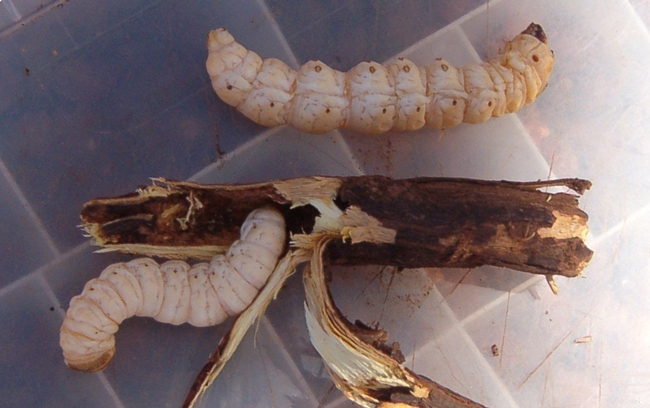
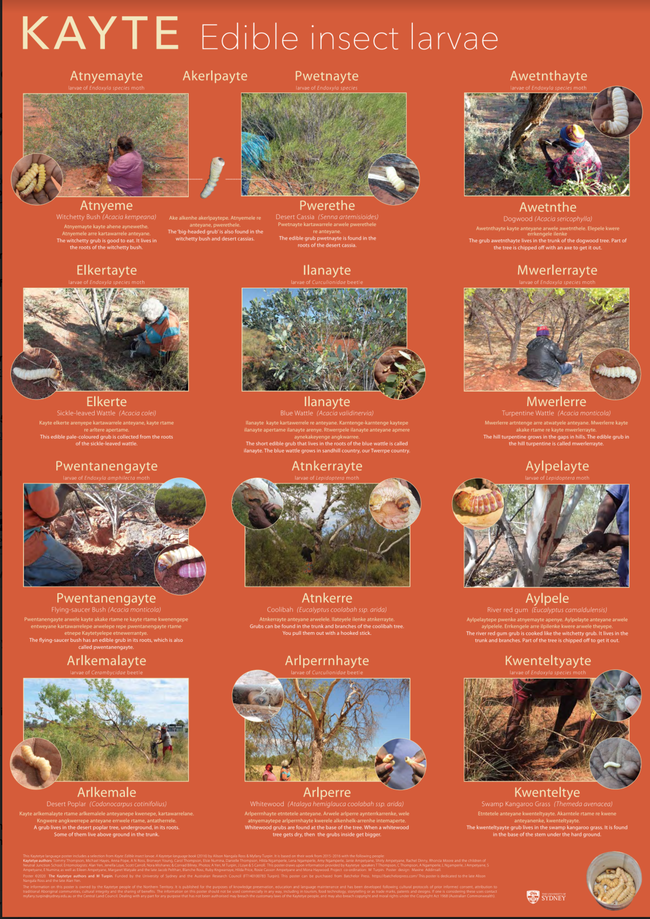
- Author: Kathy Keatley Garvey
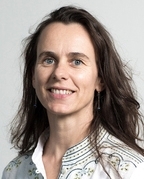
Grub? Food? Yes, think specifically of insect larvae.
Myfany Turpin of the University of Sydney will speak on "Grub's Up! The Category of Edible Insect Larvae in Central Australian Aboriginal Languages" at the UC Davis Entomology and Nematology's virtual seminar at 4:10 p.m., Wednesday, Oct. 7.
This is the first of a series of fall seminars hosted by the department and coordinated by Ian Grettenberger, Cooperative Extension specialist and assistant professor.
"Dr. Turpin is a linguist and musicologist that has worked on the use of insects as aboriginal food sources," Grettenberger said.
In an article on "Edible Insect Larvae in Kaytetye: Their Nomenclature and Significance," published in March 2017 in the Journal of Ethnobiology, she wrote: "Insects have traditionally constituted an important source of food in many cultures, but changes in dietary practices and other lifestyle traits are threatening the transmission of insect-related knowledge and vocabulary to younger generations of Indigenous Australians. This paper describes the rich cultural and culinary traditions surrounding an important insect group, namely a class of edible insect larvae consumed by a desert community in central Australia. Twenty-nine different edible insect larvae are named in the Kaytetye language, with the names encoding the identity of the host plant on which the larvae are found. We describe the complexities involved in the naming system, paying special attention to cultural and linguistic factors. The difficulties in the scientific identification of these ethnotaxa are discussed, as are the significance of our data to (1) questions of universal patterns in ethnoclassification and nomenclature and (2) the purported lack of binomially-labeled folk species in the languages of hunter-gatherer societies."
Turpin, with the Sydney Conservatorium of Music, has been working on Australian Aboriginal songs and languages since 1996, according to her website. "Her research interests include the relationship between language and music, especially of lesser-known cultures; and identifying ways to support the continuation of endangered languages and performance arts. More specifically, her work examines Aboriginal song-poetry and its relationship to spoken languages. She is also involved in linguistic documentation of the Aboriginal language Kaytetye as well as Indigenous ecological knowledge and the lexicon in Arandic languages."
Turpin's hosts are evolutionary ecologists and biologists Scott Carroll and Jenella Loye of the Institute for Contemporary Evolution who engage in Carroll-Loye Biological Research. The scientists are affiliated with the Sharon Lawler lab, UC Davis Department of Entomology and Nematology.
Link to form for Zoom link and instructions: https://forms.
For technical issues, contact Grettenberger at imgrettenberger@ucdavis.edu. For more information on the seminar speaker, contact Scott Carroll or Jenella Loye at scott@carroll-loye.com.
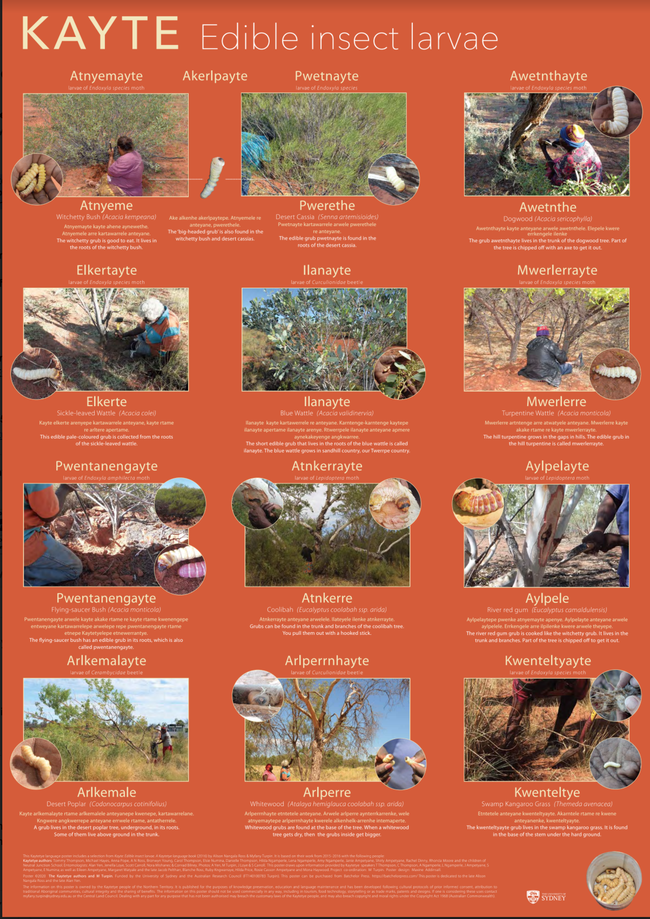
- Author: Kathy Keatley Garvey
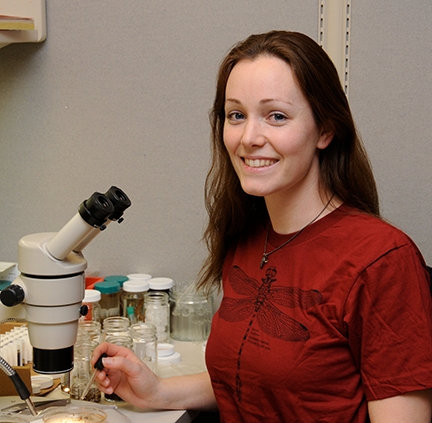
If you're rearing a bed bug colony, they need blood. Yours, if you don't mind.
Someone else's, if there's no one else around.
A big draw at the Bohart Museum of Entomology's recent open house, "Parasite Palooza," was a bed-bug feeding demonstration, featuring bed bugs from a UC Davis-reared colony.
When it was feeding time for the parasitic insects, Cimex lectularius, two scientists stepped forth and offered their arms in the name of science.
Charlotte Herbert, who is studying for her doctorate in entomology, volunteered to be the first "blood donor." Next to step up was nematologist/parasitologist Lauren Camp, who received her doctorate last December at UC Davis.
The particulars: Tabatha Yang, education and outreach coordinator for the Bohart, handed each scientist a bed bug enclosed in fine netting. The netting proved fine enough to prevent escape, but large enough to allow feeding.
"We don't want any escapees," Yang said.
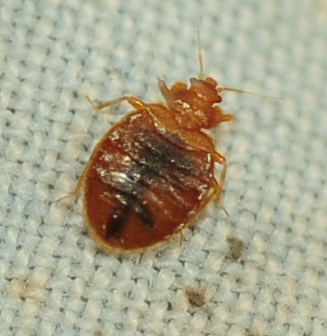
The insects originated from the parent colony of UC Davis entomology graduate Danielle Wishon, now a forensic investigator for the Sacramento Police Department. She began rearing them several years ago, intending to do research. Later she gave some of her bed bugs to UC Davis researcher Jenella Loye of the UC Davis Department of Entomology and Nematology, who in turn loaned some to the Bohart Museum for its "Parasitic Palooza: Botflies, Fleas and Mites, Oh, My."
Wishon says it's fairly easy to rear bed bugs. "If you want a fast growing colony, you can feed them once a week. When I was very actively feeding them, I chose to feed them once or twice a month so the colony didn't get too big too fast. I've gone as much as six months without feeding them, and they repopulated just fine. I started this colony several years back, but I would occasionally add individuals I find on mattresses discarded by UC Davis students during the great fall quarter move."
Wishon acknowledged that in the past, she 'sub-let' feeding responsibilities to forensic entomologist Bob Kimsey of the UC Davis Department of Entomology and Nematology faculty and to entomology student/Bohart associate Wade Spencer. "Hey, they offered!" she said.
Has Wishon ever encountered bed bugs in a hotel room?
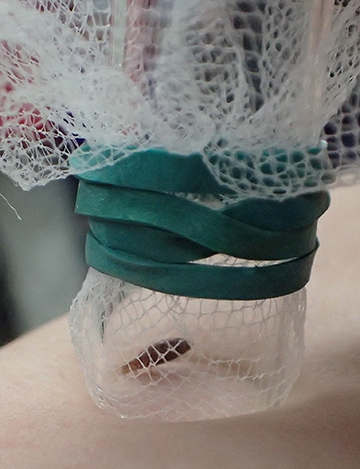
According to the Center for Disease Control and Prevention (CDC): "Everyone is at risk for getting bed bugs when visiting an infected area. However, anyone who travels frequently and shares living and sleeping quarters where other people have previously slept has a higher risk of being bitten and or spreading a bed bug infestation."
"Bed bug infestations usually occur around or near the areas where people sleep," the CDC points out on its website. "These areas include apartments, shelters, rooming houses, hotels, cruise ships, buses, trains, and dorm rooms. They hide during the day in places such as seams of mattresses, box springs, bed frames, headboards, dresser tables, inside cracks or crevices, behind wallpaper, or any other clutter or objects around a bed. Bed bugs have been shown to be able to travel over 100 feet in a night but tend to live within 8 feet of where people sleep."
Bed bugs are not known to spread disease, according to the CDC. However, excessive scratching can "sometimes increase the chance of a secondary skin infection."
Wishon noted that some people experience a "pretty negative reaction to the saliva--flu-like symptoms if I remember correctly. That's really the reason I want to keep feeding a colony even though I am not going to be doing research on them anytime soon--most of the older researchers I know who once fed a colony but stopped, or who traveled to countries where they were common and were exposed regularly but then moved back, and were exposed to them many years later, seem to develop hyper sensitivity to bed bug saliva. This could be completely anecdotal and coincidental, but I've heard this familiar story enough times to want to error on the side of caution and continue feeding without years of breaking. I don't want to develop a negative reaction to exposure."
Both Camp and Herbert said they basically didn't feel much of anything when the bed bugs began feeding. Here's why: "When bed bugs bite, they inject an anesthetic and an anticoagulant that prevents a person from realizing they are being bitten," according to the CDC. "Most people do not realize they have been bitten until bite marks appear anywhere from one to several days after the initial bite. The bite marks are similar to that of a mosquito or a flea -- a slightly swollen and red area that may itch and be irritating. The bite marks may be random or appear in a straight line. Other symptoms of bed bug bites include insomnia, anxiety, and skin problems that arise from profuse scratching of the bites."
Any reactions? "It took a while, but I did react to the bed bug bites," Camp said. "On the third day (Jan. 25), I saw raised red marks on my right arm, that were a bit itchy. Guess it took me three days to react."
Said Herbert: "I had a very small red mark where it bit, but no lasting marks or feelings. I felt it bite, but just barely. However, I have had bed bugs before while visiting my grandparents in the U.S. Virgin Islands and the bites were pretty terrible! I was itchy and thrashed all night, I didn't realize what was happening until the morning when I was covered in little bite marks and we found the bed bugs on the edges of the mattress. They looked very well fed!
No wonder folks say: "Good night! Sleep tight! And don't let the bed bugs bite."

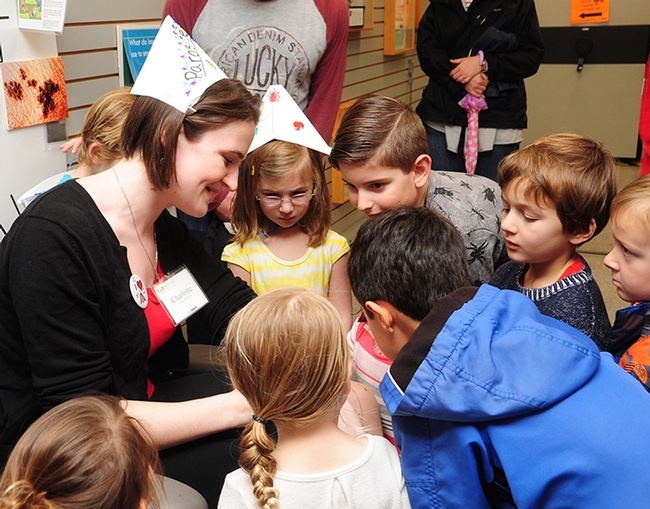
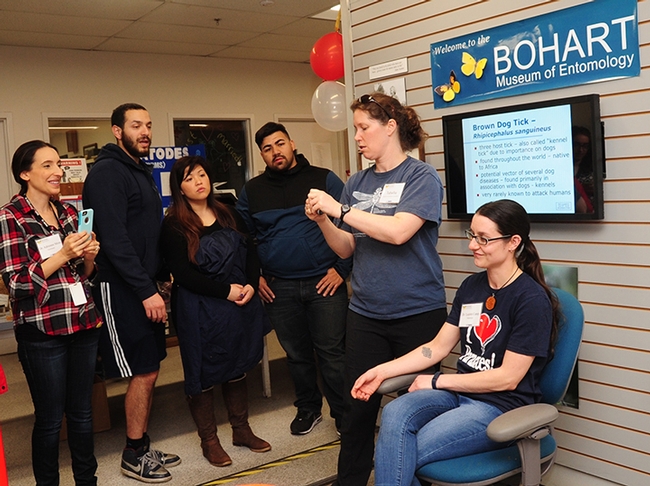
- Author: Kathy Keatley Garvey
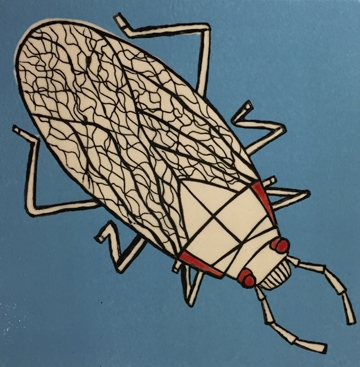
And unleash the secret of soapberry bugs?
Students in the Entomology 1 class, offered by the UC Davis Department of Entomology and Nematology, studied soapberry bugs under the tutelage of evolutionary ecologists/soapberry scientists Scott Carroll and Jenella Loye. The students then created screen-printed tile mosaics (like the photo at right).
The popular class, headed by Diane Ullman, professor of entomology, UC Davis Department of Entomology and Nematology, fuses art with science. Ullman, not only a noted entomologist but an accomplished artist, co-founded and co-directed the UC Davis Art/Science Fusion Program.
Where can you see the students' art? It will be among the work featured at "The Secret World of Insects" exhibition and reception, set from 5 to 8 p.m., Wednesday, June 3 in the Third Space Art Collective, 946 Olive Drive. It's free and open to the public.
"Soapberry bugs are beautiful insects that are found in many parts of the world. Their most defining ecological characteristic is their specialized diet," Carroll says on his website, Soapberry Bugs of the World. "They feed on the seeds of the soapberry family, which includes well known plants like boxelders, maples, soapberries (or soapnuts), jacket plums, rambutans, and litchis. These plants have evolved many ways to protect their seeds from soapberry bugs: flying seeds, seeds protected in inflated spheres, seeds with cyanide, and seeds that are held unfilled on the plant for months while the bugs slowly starve. Yet these insects work around the plants' co-evolved defenses and use the seeds to fuel their own development and reproduction."
Carroll directs the UC Davis Institute for Contemporary Evolution. Both he and Loye, husband and wife, are members of the Sharon Lawler lab, UC Davis Department of Entomology and Nematology.
Ullman said that 70 students participated in the Entomology 1 class last quarter. "We had four sections," she added. They were:
- Ceramics. The students created a screen-printed tile mosaic about evolution of the soapberry bug with the support and scientific advice of Jenella Loye and Scott Carroll. Also, this quarter, self-described rock artist Donna Billick, co-founder and former co-director of the UC Davis Art/Science Fusion Program, assisted the students.
- Sculpture with reuse materials. The students made sculptural story boards about insects.
- Painting and multimedia.The students did trip tic-like canvases about a diversity of insects.
- Bioart. The students created insect drawings with fungi on agar.
